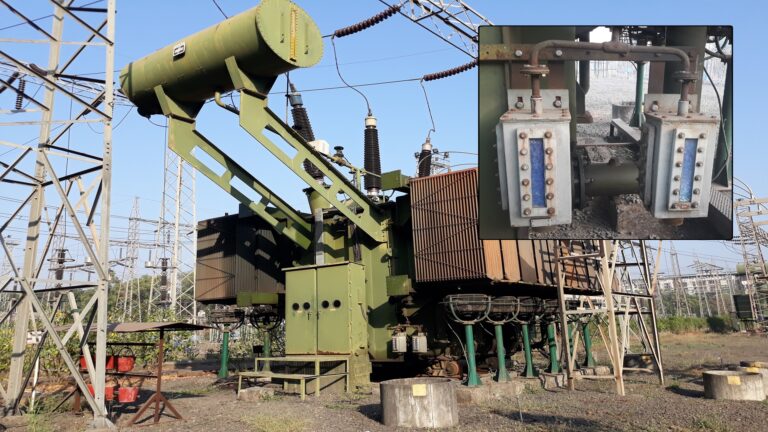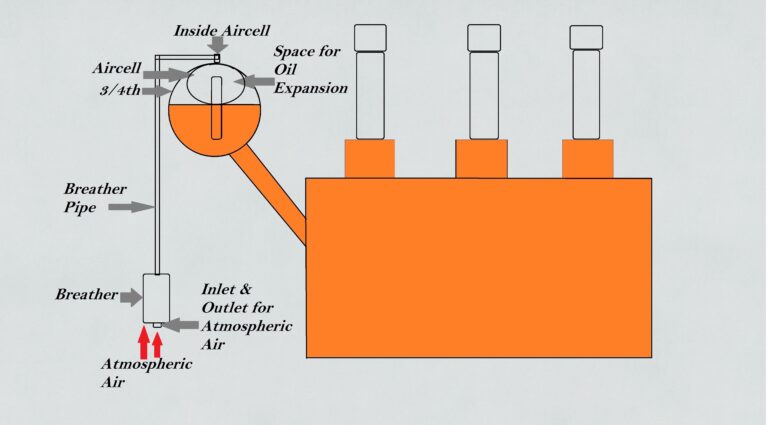The Breathing Process of a Power Transformer
As we humans breathe, transformers also breathe. But two are totally different breathing processes almost in every aspect. Let’s focus on transformer breathing.
Let’s start with three basic questions.
What is the transformer breathing?
Why does the transformer breathe?
How does the transformer breathe?
We will see these questions one by one.
Now let’s start with the first, what is transformer breathing actually?
The transformer always inhales and exhales air all the time when in operation, through silica gel breathers. This process is called transformer breathing.

As we know the transformer is an airtight machine and completely filled with insulating oil, which means there is no way to pass air in or out of the transformer.
But atmospheric or ambient temperature is never constant. It always varies with time. For example temperature on a sunny day is quite high as compared to the temperature at night. Also, oil temperature varies with the loading of the transformer. More the loading, more the temperature of the transformer. As per thermodynamics law, the oil expands at high temperature and contracts at low temperature. Hence an outlet and space are required to compensate for this expansion and contraction of oil. So to accommodate expansion space is provided in the oil conservator tank. And outlets are provided through the breather.
As we know, oil in a transformer is filled up to three fourth of the conservator, and an air cell is fitted inside the conservator occupying that extra space above the oil. A small size breather pipe comes out of the conservator. This breather pipe has one open inside the air cell. And at the other end breather is connected.
Hence, when transformer oil temperature drops, oil contracts, and the oil level in the conservator goes down. So to compensate for this contracted volume of oil, atmospheric air gets inside the air cell through a breather and it air cell expands, compensating contracted oil volume. When transformer oil temperature increases, the oil expands, and the oil level in the conservator goes down. To accommodate this extra volume of oil, expanded oil pushes the air cell up, and the air cell gets contracted, pushing air out through breathers.


This process of air in and out through a breather is called transformer breathing.
Here please note that air that gets inside of air cell passes through silica gel breathers. This silica has the hygroscopic property due to which it absorbs water. Also, there is an oil cap at the bottom of the breather which catches any other contaminations in the air. Hence the air that goes into the air cell is dry and free of contamination. Also, there is another layer of protection, which is the air cell. Since air gets accumulated in air cell, there is no direct contact between breathed-in air and transformer oil. Hence this avoids any possible moisture ingress or contamination of transformer oil. Which consequently increases transformer life.